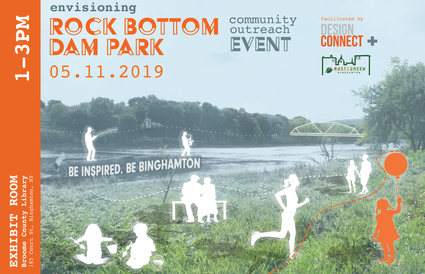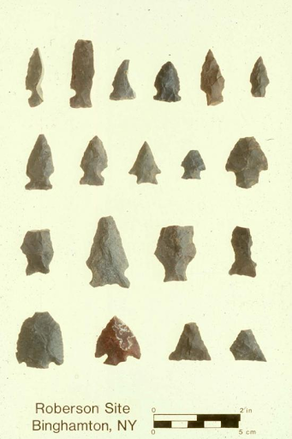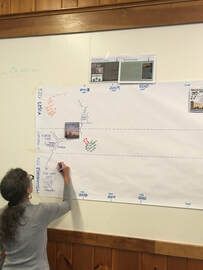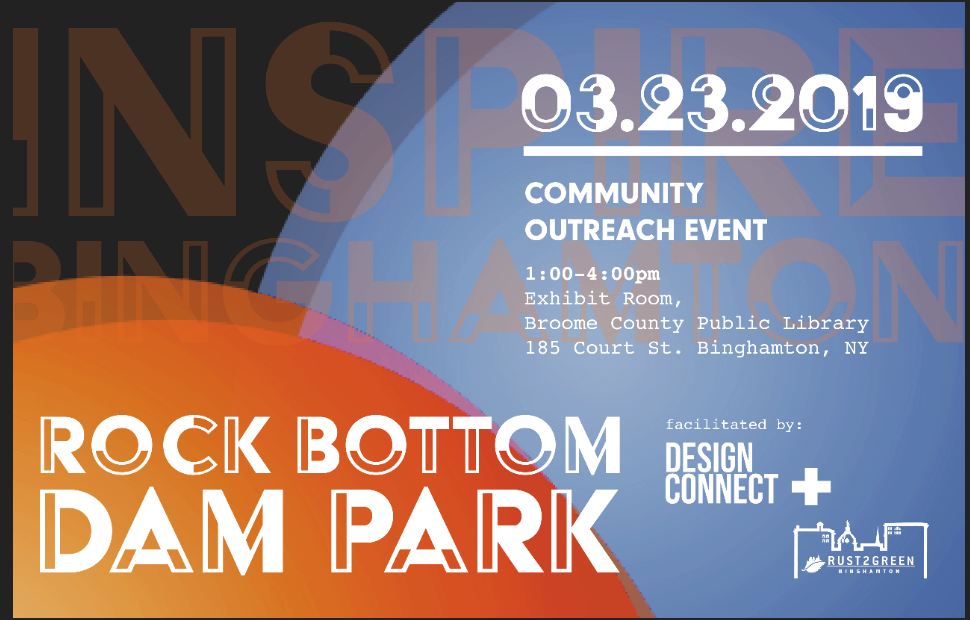|
On Friday, April 28th in Ithaca, NY, Rust2Green Binghamton team members (Dr. Shorna Allred, Juliet Berling, Amanda Curtis) attended the Exploring Climate Migration to the Rustbelt: A Regional Workshop, hosted by Dr. Linda Shi. Dr. Shi is an Assistant Professor in Cornell’s City and Regional Planning Department. This workshop brought together stakeholders from various backgrounds including city planners, researchers, nonprofit leaders, environmental activists, past county legislatures, and sustainability consultants, throughout the rust belt region of upstate New York. Participants represented communities in Buffalo, Albany, Binghamton, Saratoga, and Ithaca, among others. This meeting was one of 4 regional meetings conducted throughout the Northeast to be concluded by a summit, the Local Solutions Conference, in May 2023. Dr. Shi and her research team plan to present the synthesis of the findings from these workshops in memos to legislators and also to publish an article on the work. The objective of this workshop was to explore a few key questions:
Photo Credit: Graphic taken from Dr. Shi’s presentation. For more information about Dr. Shi and her work, please visit her website. The Rust 2 Green team would love to hear your thoughts on the topic. Please feel free to contact Amanda Curtis at [email protected].
0 Comments
 Looking for a great way to give back to the your community? On Saturday, May 11th Binghamton community members of all ages are invited to join Design Connect and Rust 2 Green Binghamton partners in an effort to re-imagine Rock Bottom Dam Park! Following a community outreach event and a series of fun-filled participatory workshops this March, Cornell’s AAP Design Connect team has put together a vision for Rock Bottom Dam Park and will be unveiling it on Saturday, May 11th at Broome County Library. Join us between 1-3 p.m. for a presentation and a discussion of the proposed vision for the Rock Bottom Dam Park. We look forward to seeing you there!  Source: Binghamton University Source: Binghamton University By: Alex Goddard, Rust to Green Civic Fellow, Fall 2018-Spring 2019 The Bundy Museum exhibit “Rivers of Relations” offers a glimpse into a part of Binghamton history that is often overlooked. While Binghamton has a well-documented history of settlement by Europeans, the area’s history before the revolutionary war is less known. The Rivers of Relations exhibit taught me a lot about the indigenous history of the Binghamton area, but also about how historical events can be interpreted in different ways by various communities and individuals. The recorded history of the Binghamton area started around 10,000 b.c.e., when glacial ice retreated from the Broome County area, creating a temperate forest biome which enabled human settlement. Around 800 c.e., the Haudenosaunee Confederacy formed, linking five tribes in upstate New York together. The Binghamton area was largely unsettled, though likely was used as hunting grounds by surrounding tribes. In the seventeenth and eighteenth centuries, European settlers and missionaries made first contact with the indigenous groups of the area. The conflicts that broke out as a result of some of these encounters marked the beginning of European colonization in the Broome County area. The research process has taught me a lot about the differences that recorded histories can have when recalling the same event. I found it interesting to compare the differences between the histories found online and in the exhibit. I also learned about some of the archaeological practices researchers have used to get a better picture of ancient indigenous life in the Binghamton area. For example, many of the artifacts found in the area are dated using a soil layer analysis technique called relative dating, which gives a rough estimate of how old the artifact is when compared to others in a similar area. Alternatively, other artifacts were dated through radiometric processes, which analyze the various levels of radioactive isotopes in a sample of an artifact. In recent years, construction crews have discovered artifacts like arrowheads and pottery fragments when excavating foundations for buildings and municipal parking lots in Binghamton and surrounding areas. One of the most significant discoveries was the discovery of Otsiningo longhouse remnants when digging a foundation for a rest stop in the 1970s. Other digs near the confluence of the Susquehanna and Chenango Rivers yielded arrowheads in a range of styles. Archaeologists believe that the various shapes and sizes of the arrowheads found at the site represent the cultural diversity within the Otsiningo tribe. These findings are interesting reminders of the people that settled the Binghamton area in the past.  Source: Bundy Museum Source: Bundy Museum I found the exhibit very interesting, and liked that the Bundy Museum, a museum that runs out of Binghamton manufacturing magnate Harlow Bundy’s former house, also included an exhibit on the indigenous history of the Binghamton area. While some might argue the most well known part of Binghamton’s history is the birth of companies like IBM and Endicott Johnson, it is important for citizens to embrace the settlements and communities that preceded them. The “Rivers of Relations” exhibit serves an incredibly important role in educating Binghamtonians about the origins of the Binghamton area before European settlement. Future developments in the Binghamton area can build off the example set by this exhibit to better recognize indigenous people in the city’s history. After talking with a curator at the Bundy Museum, I learned that the opening night of the exhibit was overrun with people. I see this as an indicator of the public interest of indigenous history, and maybe will encourage other local museums to run their own exhibits on indigenous people in the Binghamton Area. Even in my short visit and walk through downtown Binghamton, I found it interesting how Binghamtonians have embraced their history and choose to document it through statues and other public installations. In the future, the information that Bundy Museum Rivers of Relations curators worked hard to collect could be featured in other venues throughout the City, such as exhibits at Confluence Park, or trails that the city would like to build along the Susquehanna and Chenango Rivers. The rivers of relations exhibit broadened my knowledge of indigenous history in upstate New York greatly, and increasing awareness of the history of indigenous people in Binghamton may provoke further study and understanding of this important and interesting topic. References:
Saturday, March 23, 2019 there will be a community outreach event sponsored by Design Connect, a student run Cornell University Landscape Architecture Dep’t program, and Rust2Green- Binghamton.
Design Connect is looking for input from city residents, fishers, kayakers, canoeists, paddle boarders, swimmers, waders, hikers, bikers and outdoor-likers to design a river park which would run from upriver from Rockbottom to the Exchange Street bridge and will connect with new river facilities to be installed this summer by the City of Binghamton and Broome County. The idea is to blend the city’s history and historical river usage with opportunities to interact with the beautiful Susquehanna River. If you bring your ideas and imaginations, we’ll bring pizza, veggies, water and soft drinks. This will be a kid friendly event. We’d love to hear from young folks too. R2G-Binghamton  Photo of Rust 2 Green evaluation project partners: Back Row (left to right): Scott Peters (Associate Professor, Development Sociology, Cornell University), Caroline Williams (Program Manager, The Community Foundation of Herkimer and Oneida Counties), Paula Horrigan (Professor Emerita of Landscape Architecture, Cornell University), Amanda Curtis (R2G Civic Fellow, Cornell University), Robert Murphy (Director of Economic Development, City of Binghamton), Shorna Allred (Associate Professor, Natural Resources, Cornell University), Lynne Mishalanie (Acting Director and Founder, Utica Monday Night), Richard Kiely (Senior Fellow, Office of Engagement Initiatives, Cornell University) Front Row (left to right): Monica Hargraves (Assistant Director of Evaluation, Cornell Office for Research on Evaluation), Beth Roberts (Public Relations and Contract Management, Cornell Cooperative Extension of Broome County), Alicia Luhrssen-Zombek (Program Coordinator, R2G Utica), Heidi Mouillesseaux- Kunzman (Senior Extension Associate, Community and Regional Development Institute, Cornell University), Diane Shoemaker (Development Consultant, Cornell R2G Utica Urban Studio and Core 5 Consulting) Photo: White Eagle Conference Center Photo of Rust 2 Green evaluation project partners: Back Row (left to right): Scott Peters (Associate Professor, Development Sociology, Cornell University), Caroline Williams (Program Manager, The Community Foundation of Herkimer and Oneida Counties), Paula Horrigan (Professor Emerita of Landscape Architecture, Cornell University), Amanda Curtis (R2G Civic Fellow, Cornell University), Robert Murphy (Director of Economic Development, City of Binghamton), Shorna Allred (Associate Professor, Natural Resources, Cornell University), Lynne Mishalanie (Acting Director and Founder, Utica Monday Night), Richard Kiely (Senior Fellow, Office of Engagement Initiatives, Cornell University) Front Row (left to right): Monica Hargraves (Assistant Director of Evaluation, Cornell Office for Research on Evaluation), Beth Roberts (Public Relations and Contract Management, Cornell Cooperative Extension of Broome County), Alicia Luhrssen-Zombek (Program Coordinator, R2G Utica), Heidi Mouillesseaux- Kunzman (Senior Extension Associate, Community and Regional Development Institute, Cornell University), Diane Shoemaker (Development Consultant, Cornell R2G Utica Urban Studio and Core 5 Consulting) Photo: White Eagle Conference Center R2G Conference Fall 2018 September 11th and 12th Hamilton, NY Leaders of Rust to Green Binghamton (R2GB) and Rust 2 Green Utica (R2GU) came together at a retreat in Hamilton, NY, this past September. Over the course of two days, key partners discussed Rust to Green’s (R2G’s) individual and collective histories, objectives, strengths, and weaknesses as a starting point for developing a robust evaluation plan. The purpose of this meeting was to allow each Rust 2 Green organization to rigorously identify its impacts and how they are achieved, including the critical role of university-community relations in achieving them. In pursuing this in-depth self-evaluation, the retreat participants also saw an opportunity to identify key relationships between the two R2G projects, as well as the means by which to strengthen these moving forward, and create a greater sense of cohesion across a growing number of partners and community members. To begin this endeavor, Rust 2 Green partners recounted the histories of each effort through a collective timeline-mapping exercise. Partners collaborating to construct Rust 2 Green’s shared history timeline Photos: Amanda Curtis  Paula Horrigan drawing lines of connection across Rust 2 Green Binghamton and Utica. Paula Horrigan drawing lines of connection across Rust 2 Green Binghamton and Utica. This activity, pictured above, allowed the team to visualize when and how the two projects’ histories have intersected with one another. Identifying these key points helped partners to better understand similarities and differences between the two projects as well as ways in which they’ve influenced one another. The picture on the left shows Paula Horrigan, founder of Rust 2 Green Utica writing across the boundaries of the sections set aside for R2GU and R2GB respectively. Paula structured the timeline activity in this way, to visualize how a the two projects have evolved over the same time period. Identifying these intersections also set the stage for considering the linkages between project principles, activities, and impacts. The ultimate goal for each R2G project is to clearly articulate its theory of change and to utilize the theory to create and implement a robust evaluation plan for assessing impacts and strengthening the individual and collective efforts. Monica Hargraves and Claire Hebbard, of the Cornell Office for Research on Evaluation (CORE), served as facilitators, guiding participants through the development of “pathway models” for each project. Pathway models are a way of visually representing the relationships between actions and outcomes, and, in turn, are a way of physically representing theories of change.
Under Monica’s and Claire’s guidance, each team collaboratively brainstormed activities and outcomes, writing them on individual index cards. These cards were rearranged over and over again and the connecting lines redrawn until the team felt fairly comfortable with the relationships they had depicted. Monica and Claire uploaded these pathway models into Netway, a software program designed to allow evaluation teams to edit and refine their pathway models online. CORE describes the Netway as “an evaluation system that will revolutionize how managers track all the evaluation efforts across their organizations- overcoming the challenges of geographic dispersal, inconsistent reporting methods, isolated evaluation efforts, and varying evaluation capacity." Use of the Netway "results in smarter organizations - by increasing team collaboration and program planning, simplifying documentation and reporting, and developing well thought out evaluation plans that streamline evaluation with program management priorities” (CORE website). Pathway modeling allows an organization to better visualize its resource flow and to evaluate its efficiency overall. It also can help an organization identify opportunities for growth, including areas of too little investment or areas where invested resources are producing minimal output. In the case of Rust 2 Green, the creation of pathway models provided a means for articulating and refining principles of practice and goals in a shared and collaborative way. For example, one of the principles of practice originally identified was that R2GB is bi-partisan. Through discussion the group agreed that the project really strives to be non-partisan, working with citizens from all and no political parties. This was an important point of discussion as it reinforced aspects of the R2GB mission, such as a vision to promote increased civic participation and collaboration and lead to greater sense of cohesion across organizational partners. As a student, it was fascinating to hear each of these leader’s perspectives on what enabled R2G to prosper in certain seasons and what some of the greatest obstacles have been over the years. There were moments of laughter with the recollection of fond memories and difficult trials surpassed, as well as a few moments of heart-wrenching tears over the depth of some of the systematic social issues these leaders so passionately want to address. These instances made the heart of the organization a tangible organic entity - in these moments, it became clear that Rust to Green isn’t just a bunch of ideas on paper, but a room full of passionate people committed to positive change, who challenge the status quo. I saw in each of them what it means to fight humbly, but persistently. Over the summer, each of the R2G Civic Fellows summer interns (myself included) completed a Learning Action Plan, which encouraged each of us to set personal and professional goals and commit to a plan for moving forward with those goals during our time with Rust to Green. One of the goals I set last summer was to be a better listener. The discussions during the conference challenged me to listen carefully, to observe those around me and to be cognizant of the space I was using to speak. It made me discern more carefully when it is appropriate or beneficial to ask a question or share an idea. By observing how the partners interacted with each other, I learned how to better pose a question or offer a suggestion in a way that shows greater recognition and respect for a person speaking before me. Many of the partners wrote down their questions and suggestions as the discussion continued, and waited for an appropriate break in the discourse to bring them up to the rest of the team. On the second day of the conference, I practiced this behavior myself and found that I absorbed so much more from the discussion. I was able to observe small details in the body language of different partners in response to certain points made during the discussion. I began to observe more closely how the partners interacted and related to each other, instead of being focused on how I was interacting with each person. In this way, stepping back allowed me to better understand this community to which I have grown connected. That being said, I am still contemplating how this balance of sitting back and stepping forward applies to how we engage with one another as community members and fellow citizens. How can institutions observe one another to learn about the different dynamics they engage with and are a part of? What happens when we magnify these personal communication skills to a broader scale of engagement? I think that recognizing when to use our voice and when it is better to listen is critical when aspiring to create and protect a space where all stakeholders can participate in a dialogue. This is one of the key goals of participatory action research, to empower the diverse array of voices in a community, or, more appropriately, to provide an outlet for these voices to demonstrate the power they already rightfully have. As Rust 2 Green evolves in the years to come, some of these positions will change hands, and different issues will take center stage. Though a lot of work to develop, the evaluation plan will provide an anchor for R2G’s values, increasing the projects’ credibility and possibly leading to increased funding and institutional support within the respective communities and academia. Equally important, it will help these sustainability advocates better discern where to invest their limited time and resources to increase the overall effectiveness and impact of their work. |








 RSS Feed
RSS Feed